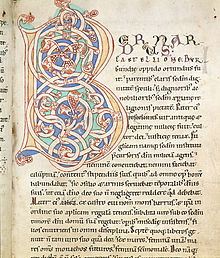| This article includes a list of references, related reading, or external links, but its sources remain unclear because it lacks inline citations. Please help improve this article by introducing more precise citations. (May 2024) (Learn how and when to remove this message) |

The Collectarium (also Collectarius, Collectaneum, Orationale, Capitulare), in the terminology of the Roman Catholic Church, is the book which contains the Collects.
History
In the Proprium de Tempore of the Roman Missal the title Statio, with the name of some saint or mystery, is frequently prefixed to the Introit of the Mass.
Before going in procession to the statio clergy and people assembled in some nearby church to receive the pontiff, who recited a prayer which was called the Collect. This name was given to the prayer, either because it was recited for the assembled people, or because it contained the sum and substance of all favours asked by the pontiff for himself and the people, or because in an abridged form it represented the spirit and fruit of the feast or mystery.
In course of time it was used to signify the prayers, proper, votive, or prescribed by the ecclesiastical superiors (imperatæ), recited before the Epistle, as well as the Secrets and the Post-Communions. Later it was applied to the prayers said at Divine Office or any liturgical service.
References
- Attribution
 This article incorporates text from a publication now in the public domain: Herbermann, Charles, ed. (1913). "Collectarium". Catholic Encyclopedia. New York: Robert Appleton Company. The entry cites:
This article incorporates text from a publication now in the public domain: Herbermann, Charles, ed. (1913). "Collectarium". Catholic Encyclopedia. New York: Robert Appleton Company. The entry cites:
- Zaccaria, Bibliotheca Ritualis (Rome, 1776), I;
- BERNARD, Cours de Liturgie Romaine: La Messe (Paris, 1898), II;
- VAN DER STAPPEN, Sacra Liturgia (Mechlin, 1902), II;
- CARPO, Compendiosa Bibliotheca Liturgica (Bologna, 1879);
- GIHR, The Holy Sacrifice of the Mass, tr. (St. Louis, Missouri, 1903).